Writers are rigorous with regard to the structure of their story and screenplay. With index cards, users can now plot their stories on the structure canvas exactly the way they would on a physical white board. Coupled with act breaks, the structure canvas on Scrite provides a visually appealing way to see index cards of various acts layed out on a large canvas.
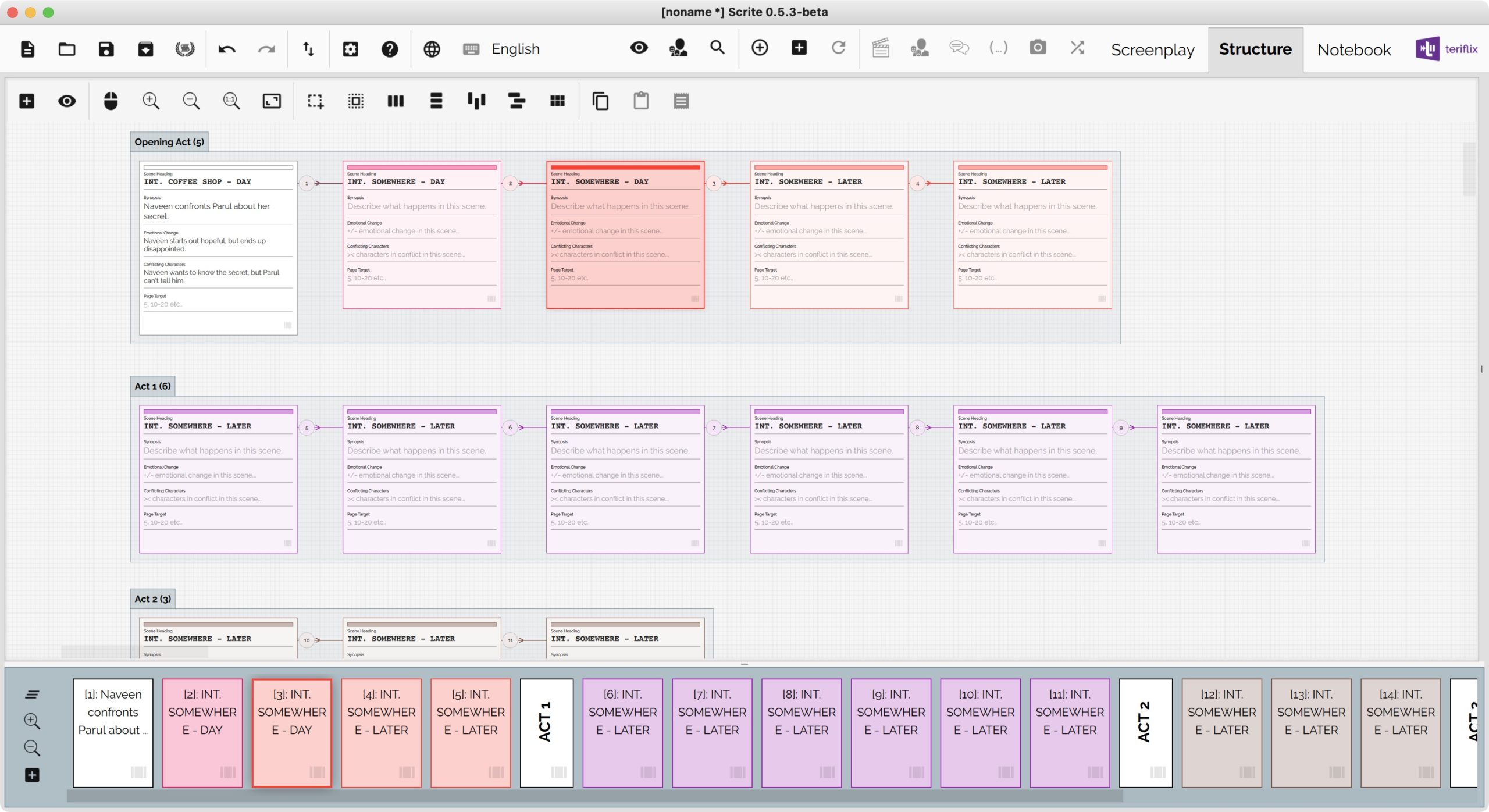
Being able to see index cards layed out act-wise is one thing, but what about being able to see structural elements?
For instance, Blake Snyder’s Save The Cat structure provides writers with a solid skeleton to build their story on top of.
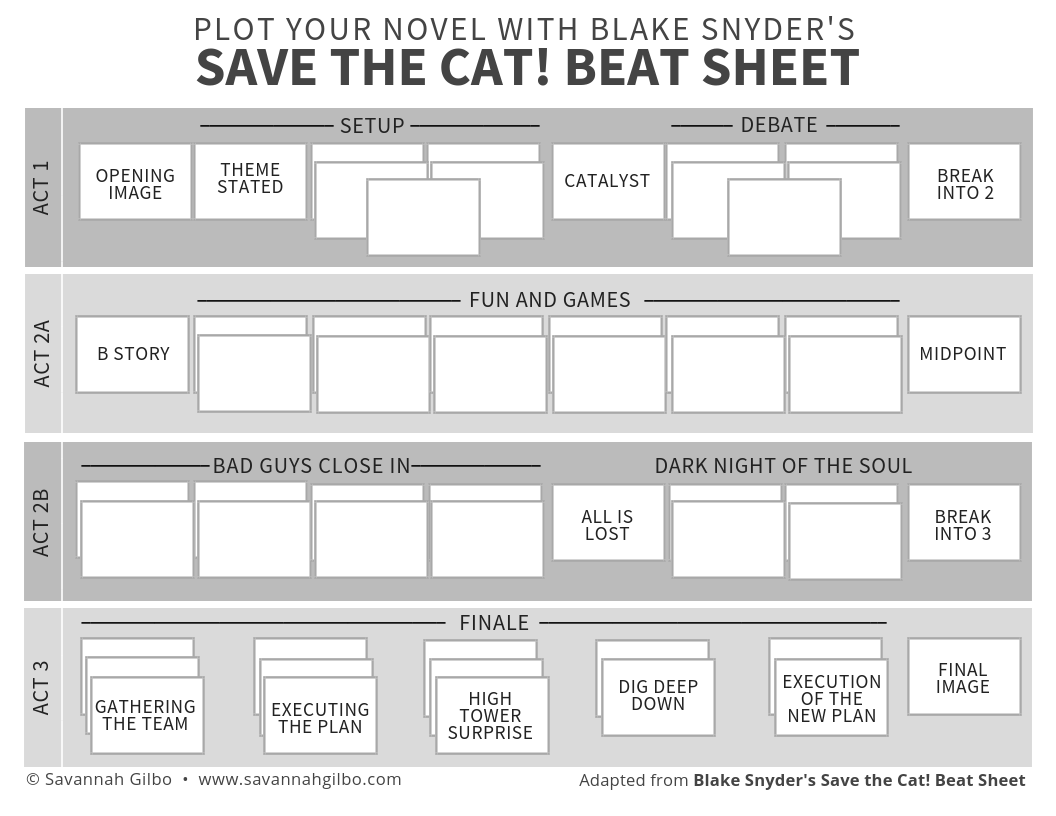
As shown in the illustration above, Blake Snyder says that all screenplays must have 4 acts: Act 1, Act 2A, Act 2B and Act 3. Each of these acts must have specific story beats. For instance, Act 1 must have one or more scenes that together create an Opening Image for the film. A few scenes where the Theme is stated. A bunch of scenes that Sets Up the world of the film. A scene or two where we show the Catalyst moment. And so on..
Until 0.5.8, they only way we could highlight these beats on the structure was by using “Text Annotations,” But annotations are notoriously hard to use and place, because they are not dynamic. We dont have, for instance, a text annotation that automatically expands or shrinks to follow a bunch of scenes.
With 0.5.9, we are adding a new feature called “Groups Tags.” Using this feature, we can now tag scenes to belong to one or more groups and then visually see them apart. (If you prefer, you can watch a video that explains this feature.)
For example, below we have the four acts of a screenplay as advised by Blake Snyder. Act 1, Act 2A, Act 2B and Act 3. When we look at the structure canvas, we get a good visualization of the acts. (Ofcourse, we realize that the index cards are all empty here, but you get the point right?)
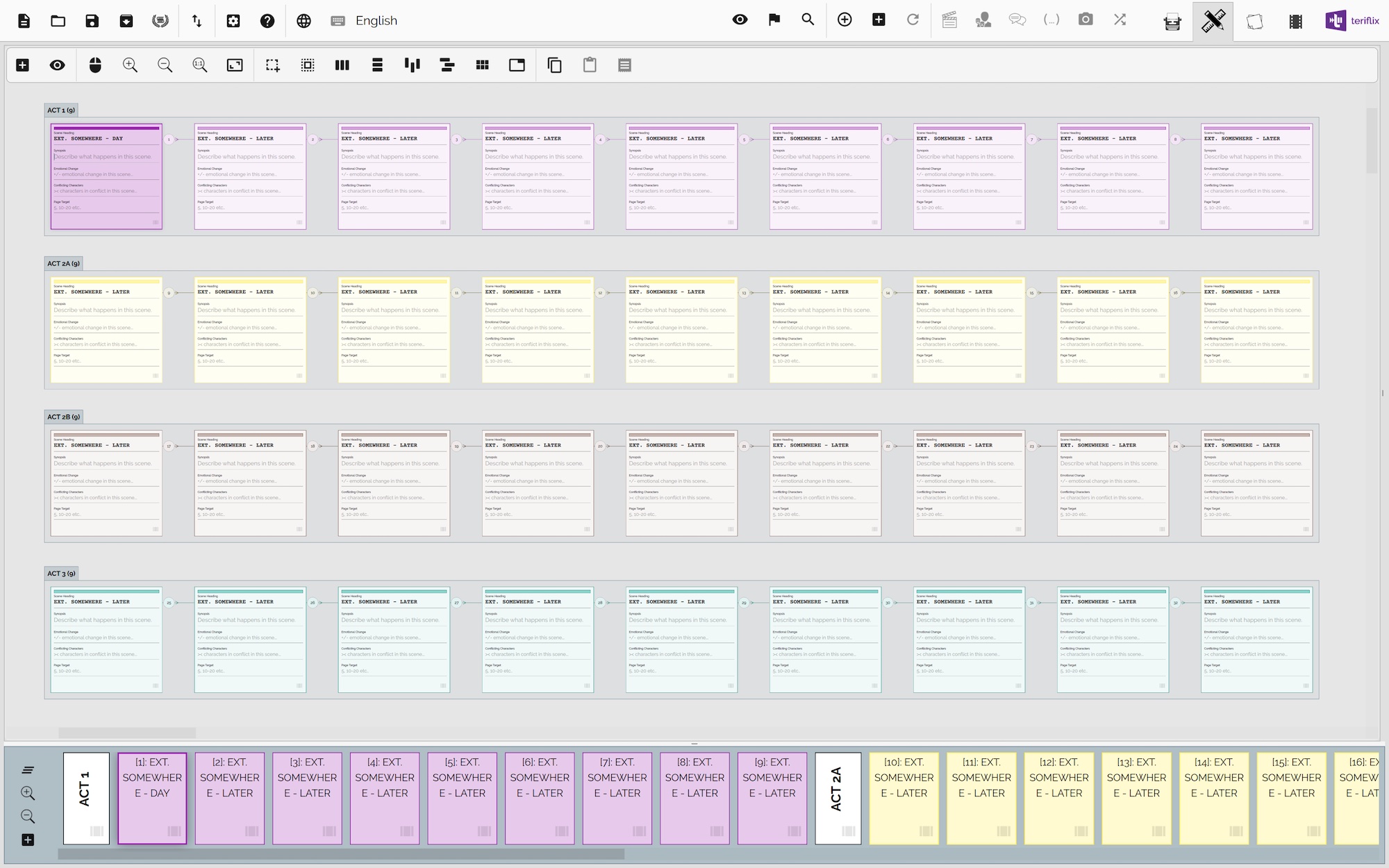
Now, lets start “tagging” scenes as belonging to one or more groups in a Blake Snyder Beat Sheet. To do that, simply right click on an index card, open the sub menu under “Tag Groups” and click on one or more groups that you want to tag.
In the screenshot below you can notice that only tags applicable to ACT-1 are shown in bold, where as the others are shown using normal font. This is because the index card for which the context menu is shown belongs to ACT-1. The Tag Groups menu always highlights most appropriate tags in this way.
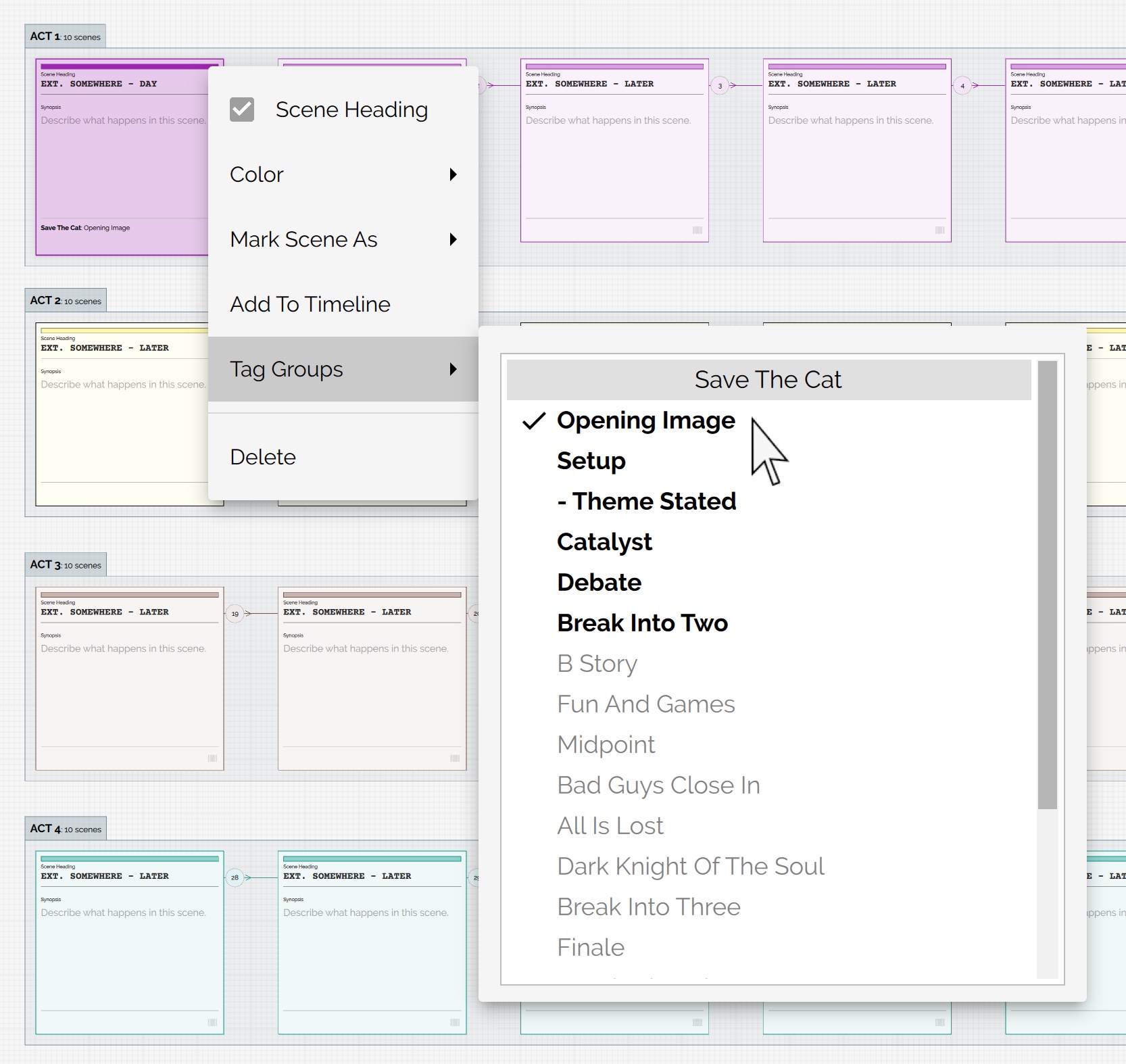
Obviously, we are fans of Blake Snyder and his Save The Cat beat sheet. So we list all the beats from his beat sheet in that menu by default. But you can create your own structures – we will talk about that later in this post.
You can either tag index cards individually, or select a group of index cards and tag them at once.
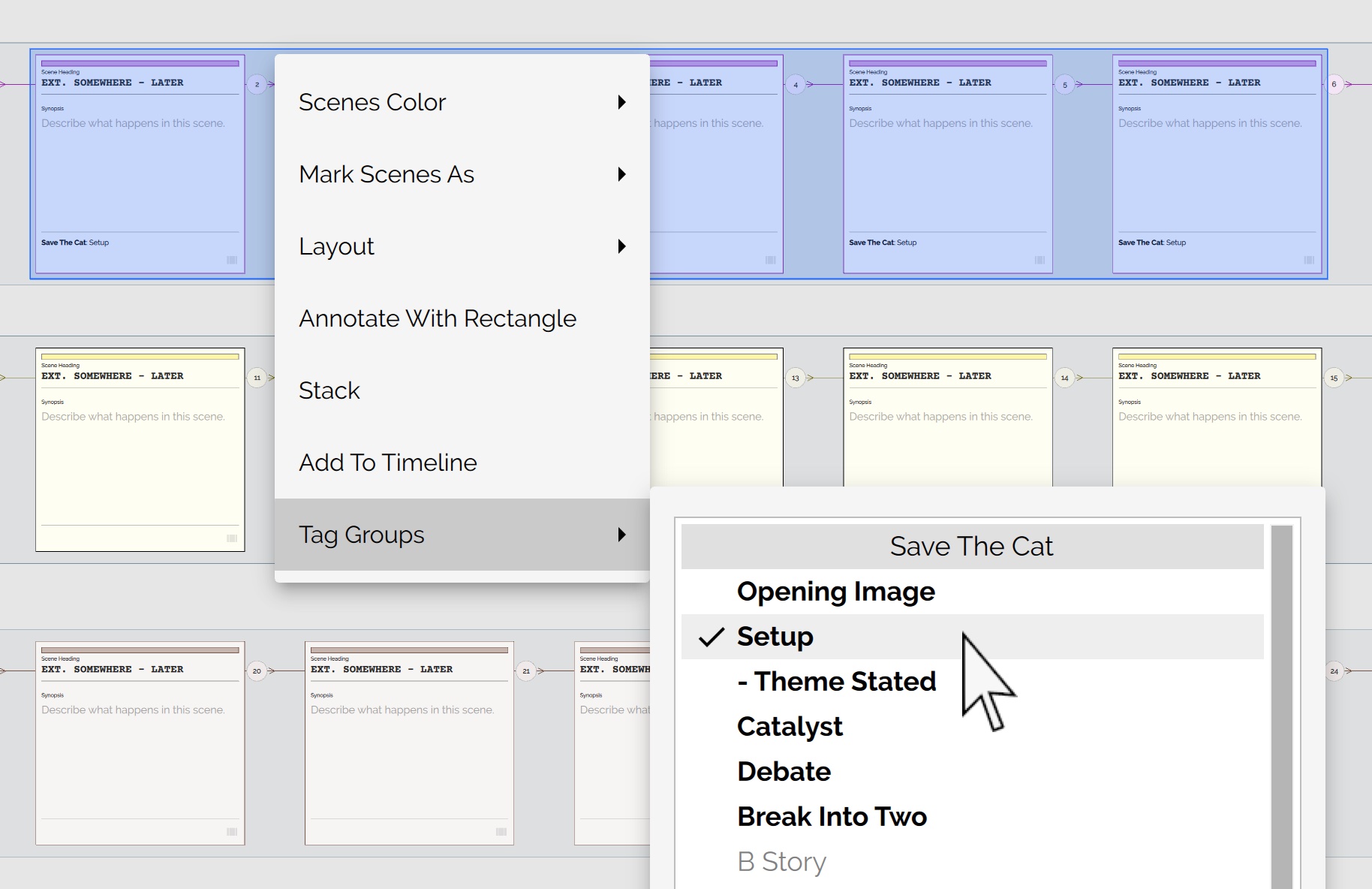
You can tag more than one group to an index card. For example, here we tag both Theme Stated and Setup to an index card.
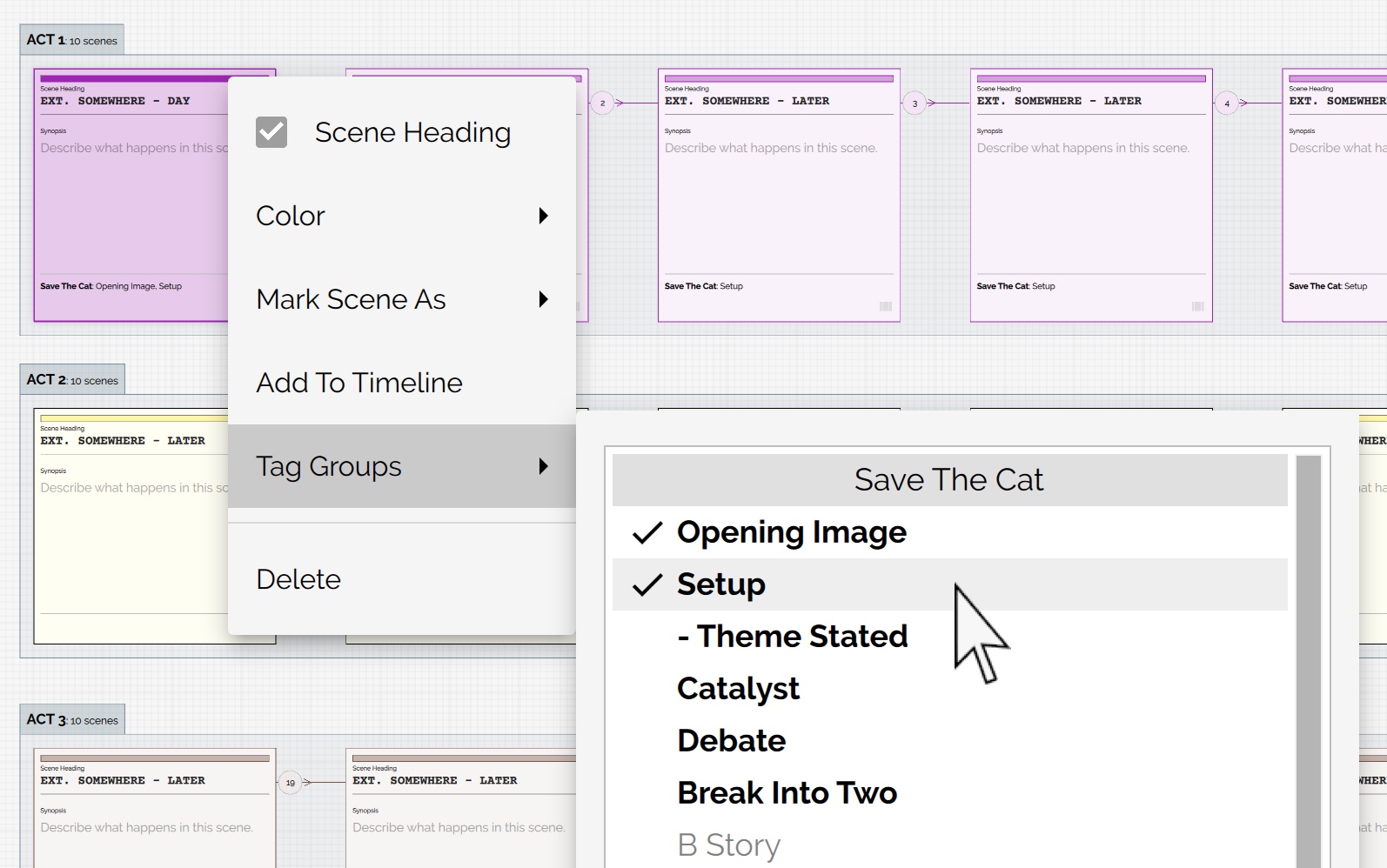
Every time you tag an index-card, it shows up in a list at the bottom of the card.
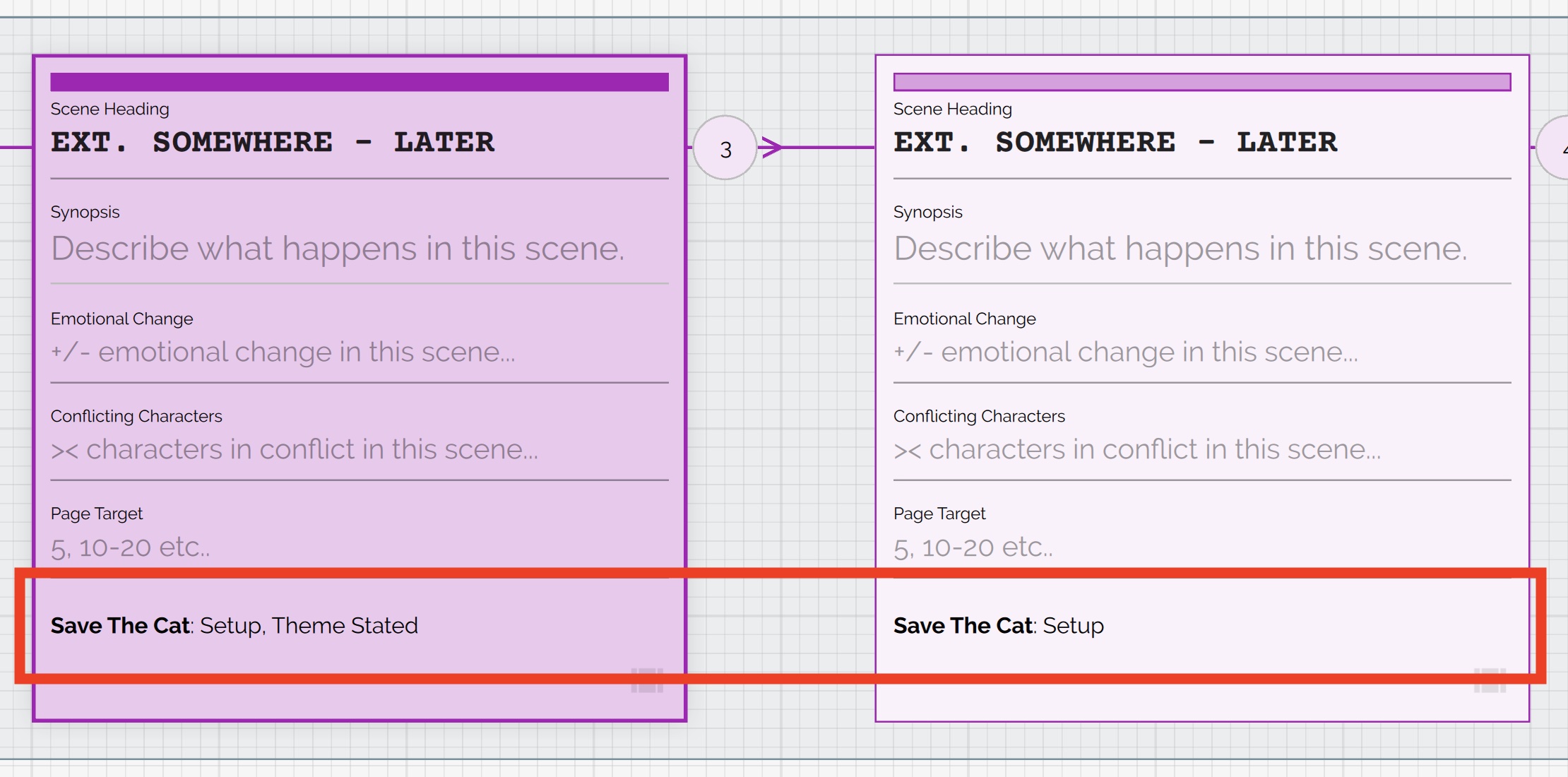
Like this, you can go on tagging index cards and super-impose your story structure on the index cards in the canvas.
As you tag the index cards, you can notice how tracks show up on the timeline highlighting the structure over there as well.

If you have scenes tagged with more than one group, then then multiple track lines are shown on the timeline.

The timeline and structure together convey a lot about your screenplay.
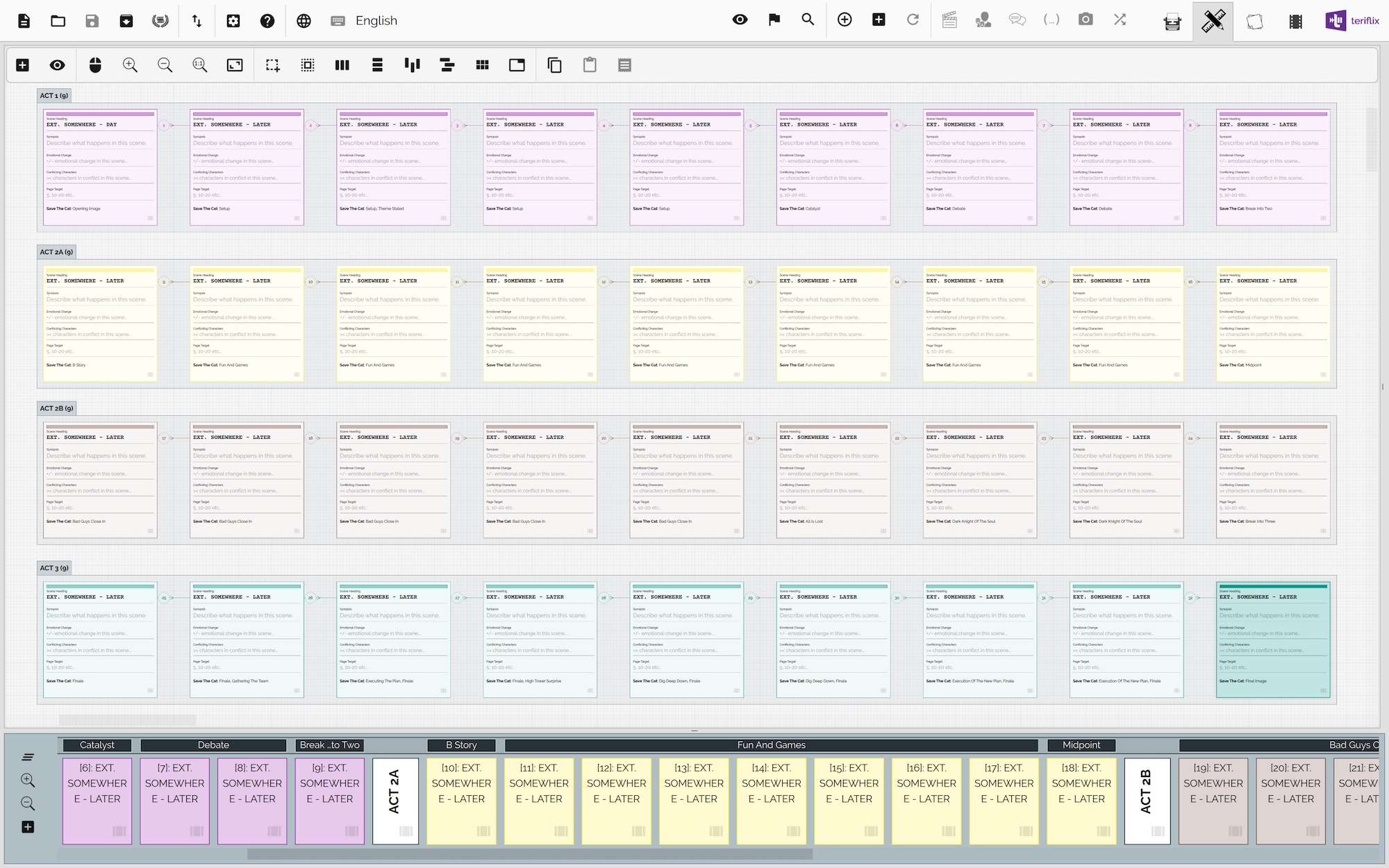
There is one problem though. The cards on the canvas are stilled grouped by acts and not by the groups we just tagged them with. Since the cards are layed out in 4 rows, we can easily see the 4 acts in the screenplay. It would be much better if they were visually grouped according to their tags.
You can click on the new “Grouping Options” button and select “Save The Cat” to get Scrite to group index cards by the tags used within “Save The Cat” category.
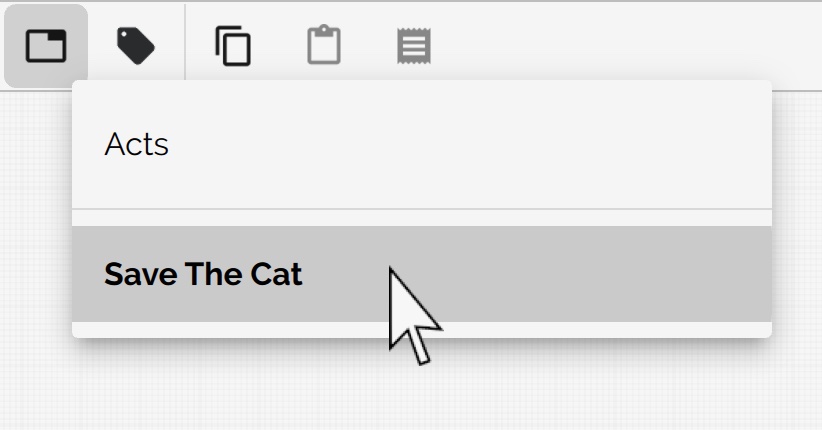
As soon as you click on this option, you will notice that the structure canvas gets updated to display something like this:
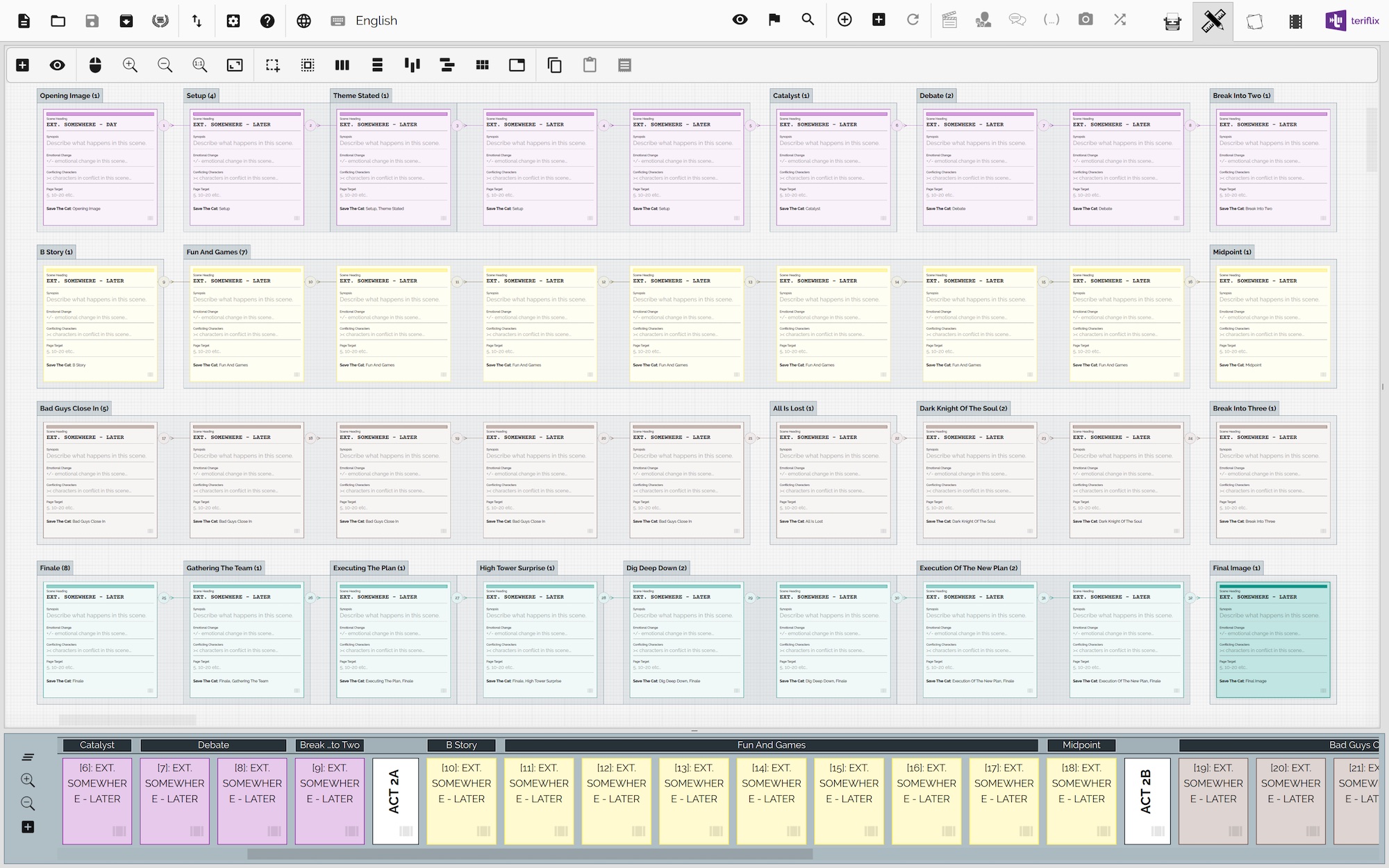
Now this view makes the structure of your screenplay come in a lot more detail. The tracks marked on the timeline, together with tag grouping on the structure canvas provides a comprehensive insight into your screenplay.
Creating Custom Tags
What if the structure that you are leveraging is not the “Blake Snyder Save The Cat” structure, but another one like “Archplot Structure“?
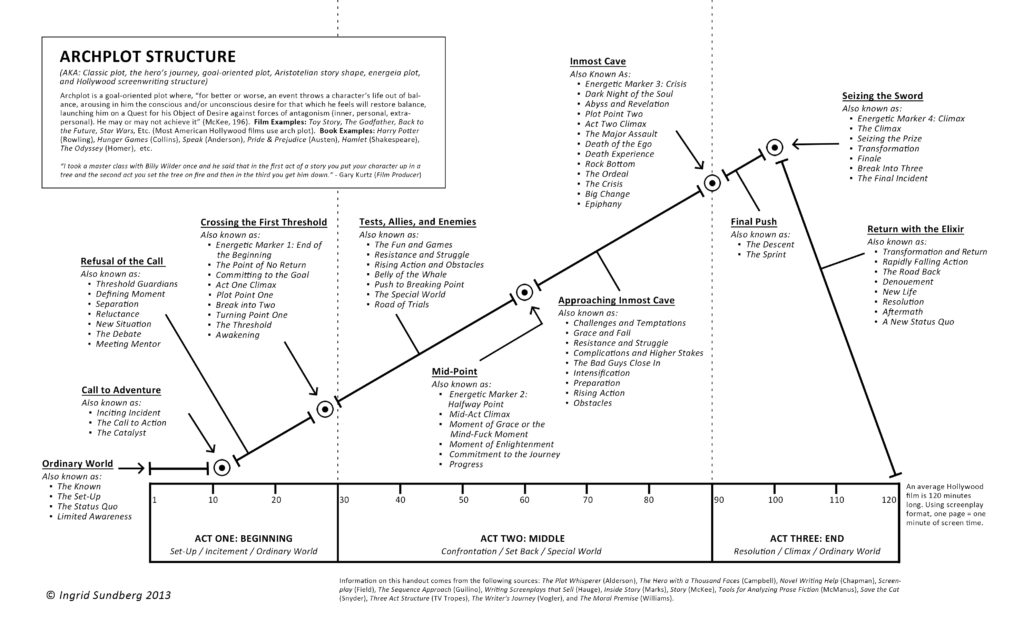
You can create tags for capturing this structure in Settings > Structure tab.
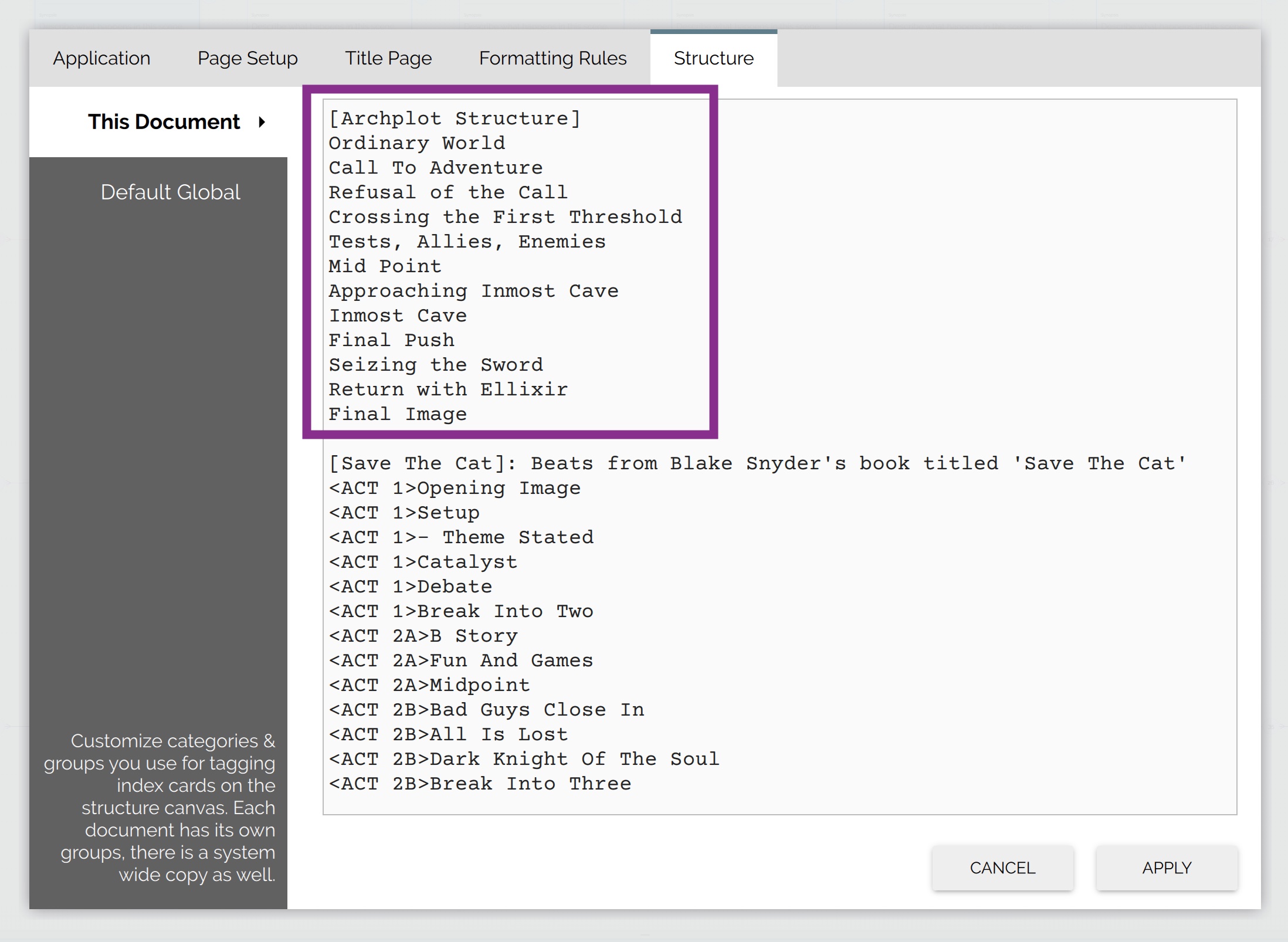
Simply spell out the beats from Archplot Structure as shown in the screenshot above. Click Apply.
Now when you go back to the structure canvas, you can notice the newly added tags in the context menu. You can now mark scenes using the newly added tags and also visualize them on the canvas & timeline.
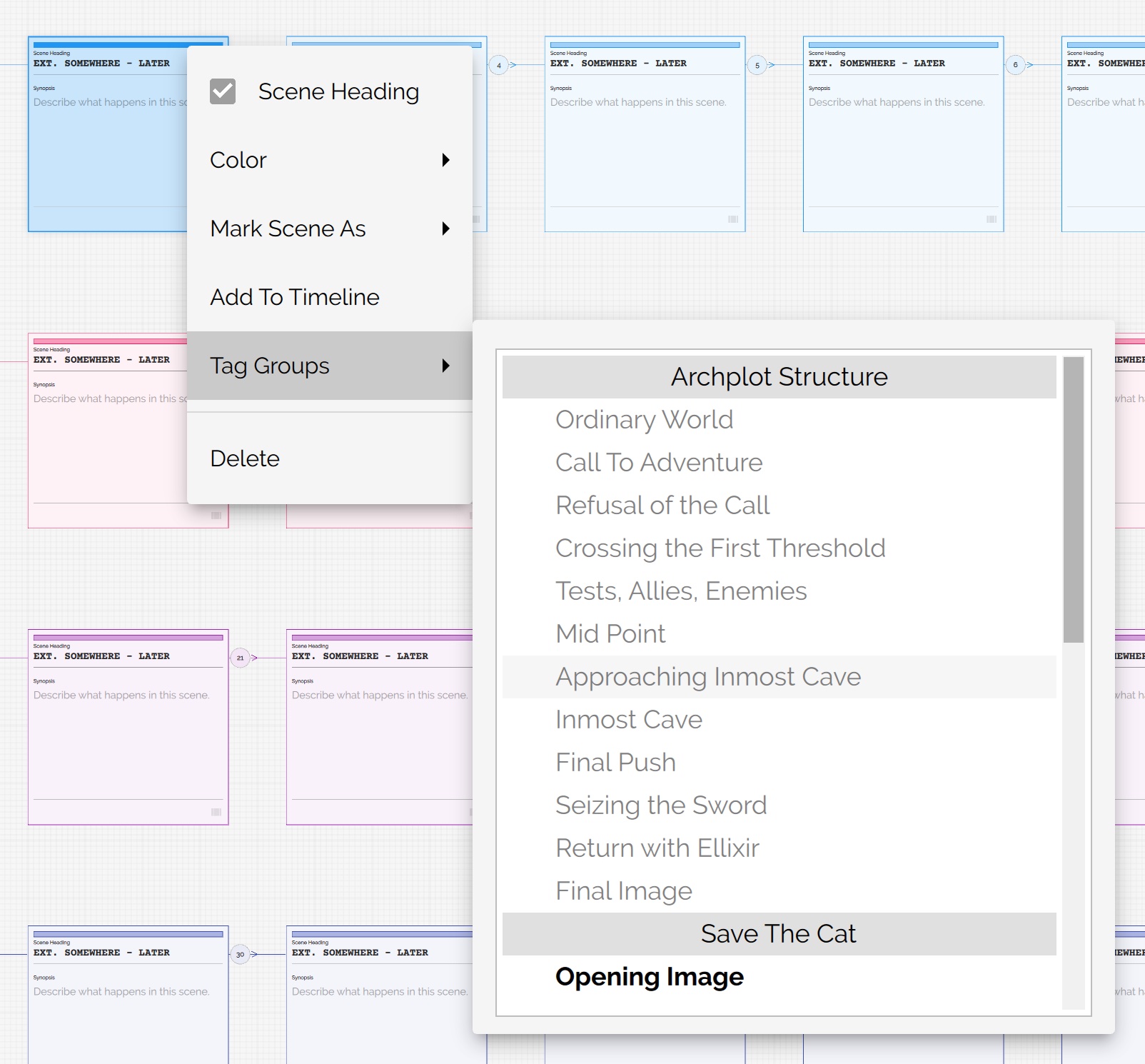
In the screenshot, you can notice that “Save The Cat” is also listed in “Tag Groups” menu. This means that you can use tags from that group also, however we imagine most writers sticking to just one structure.
Notice that all tags from Archplot Structure are shown in normal font, whereas Opening Image from Save The Cat is shown in Bold Font. This is because the card for which the context menu is shown belongs to Act-1. So Scrite recommends only those tags that can be used with Act-1 index cards.
While specifying structure tags, we can state what tags belong to what act using a simple syntax as shown below.
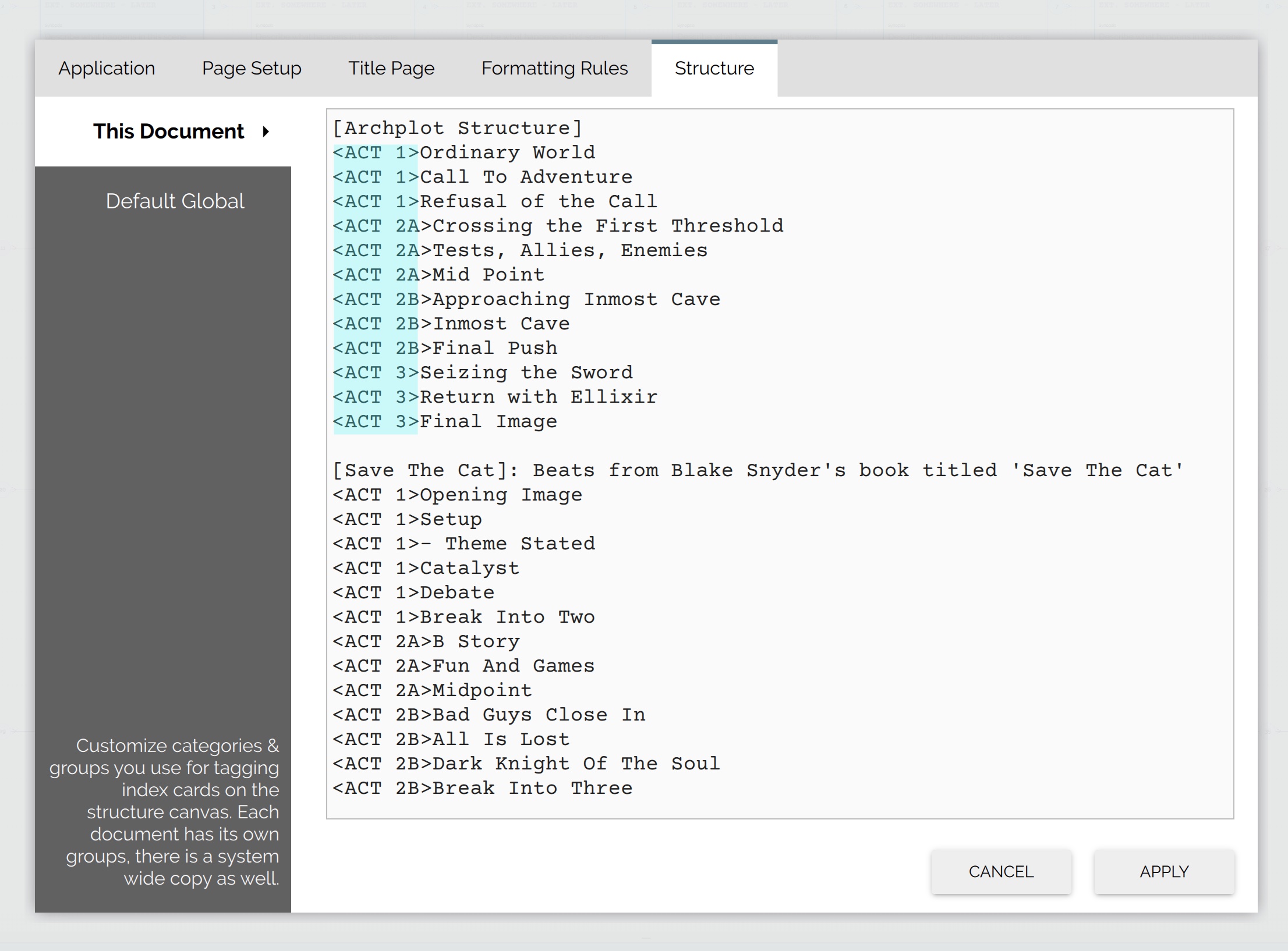
This way Scrite will know what tags to highlight for index cards in various acts.
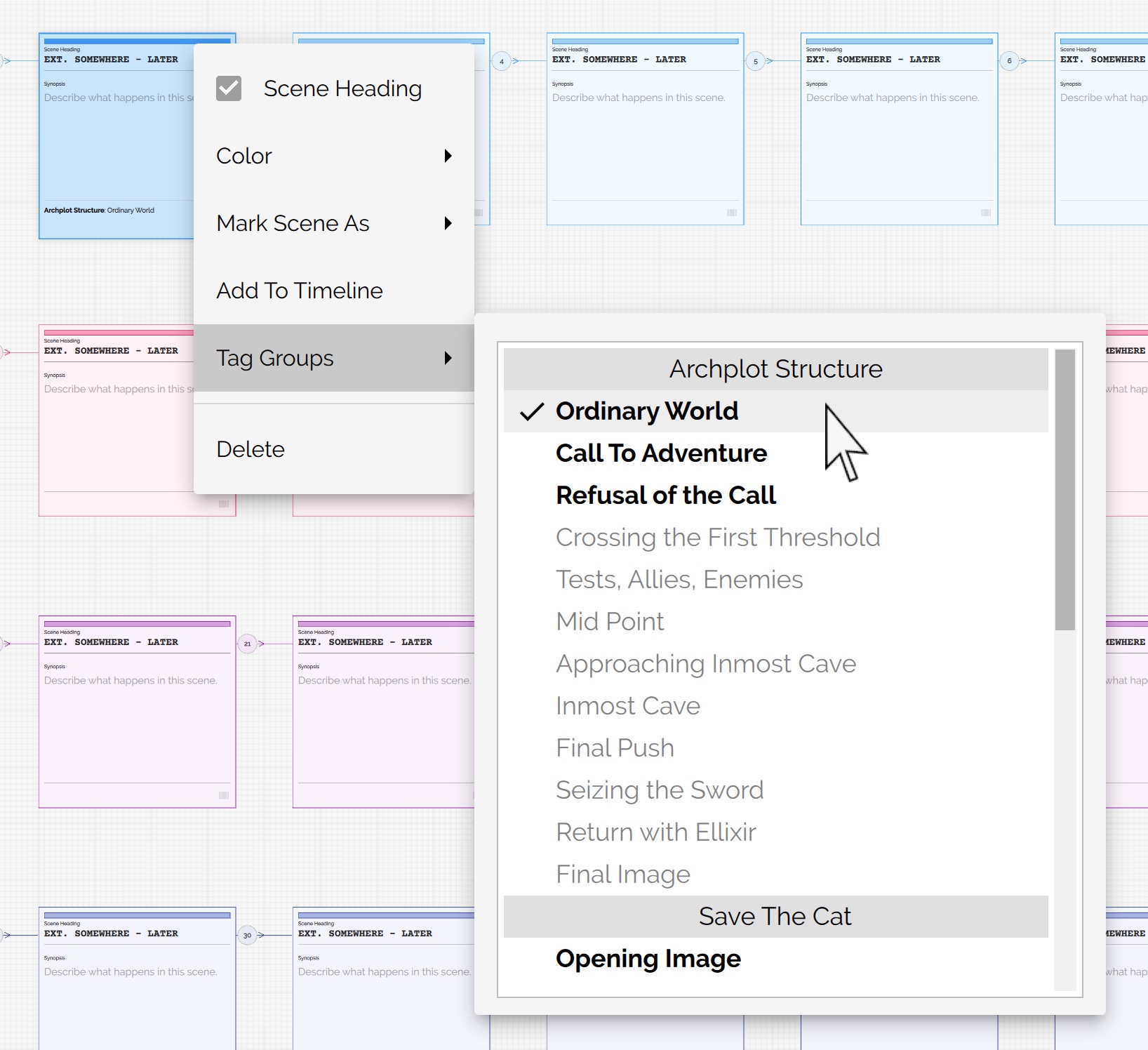
Download / update to the latest beta of Scrite to try out this feature. Let us know your feedback in the forum.